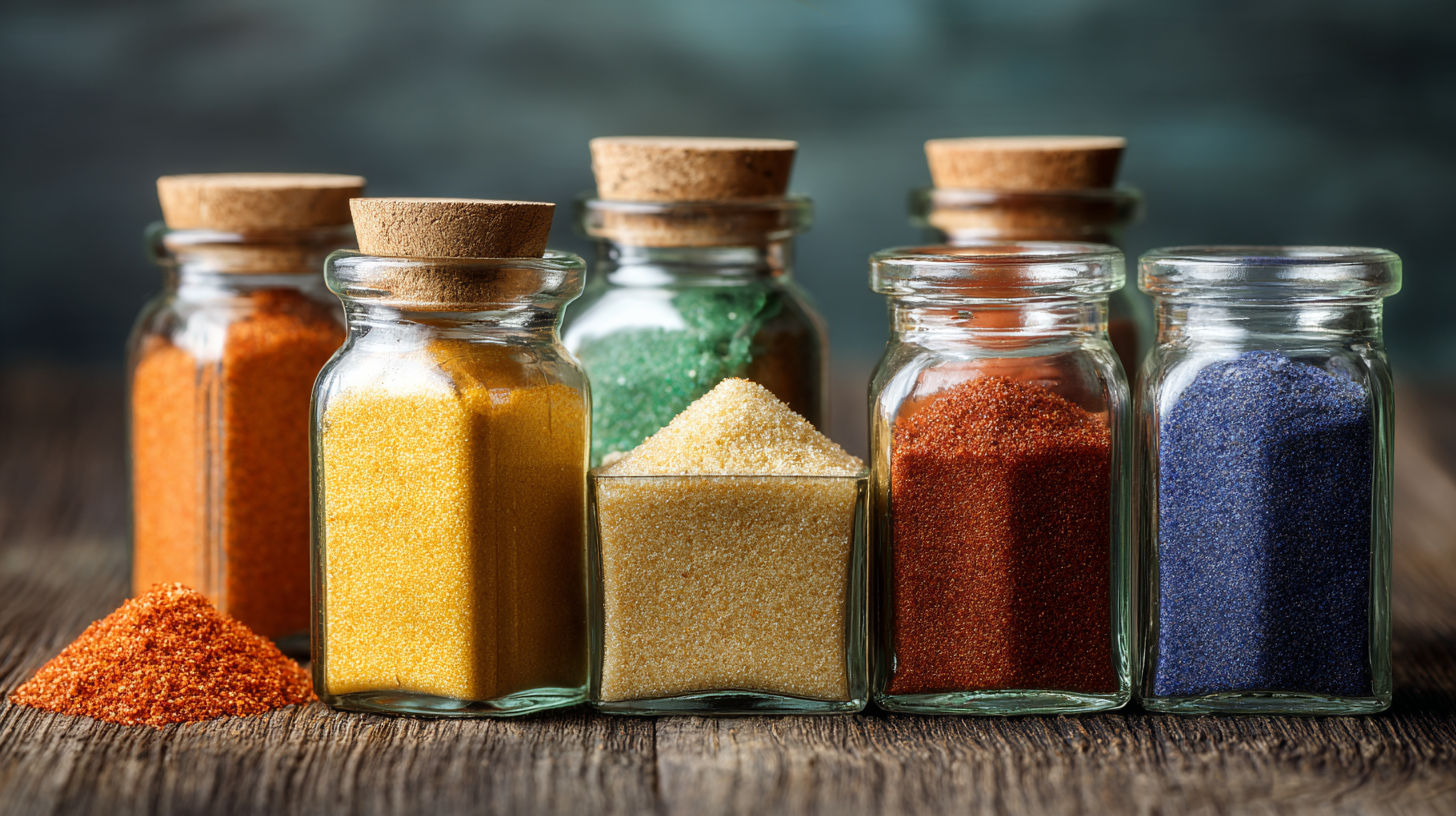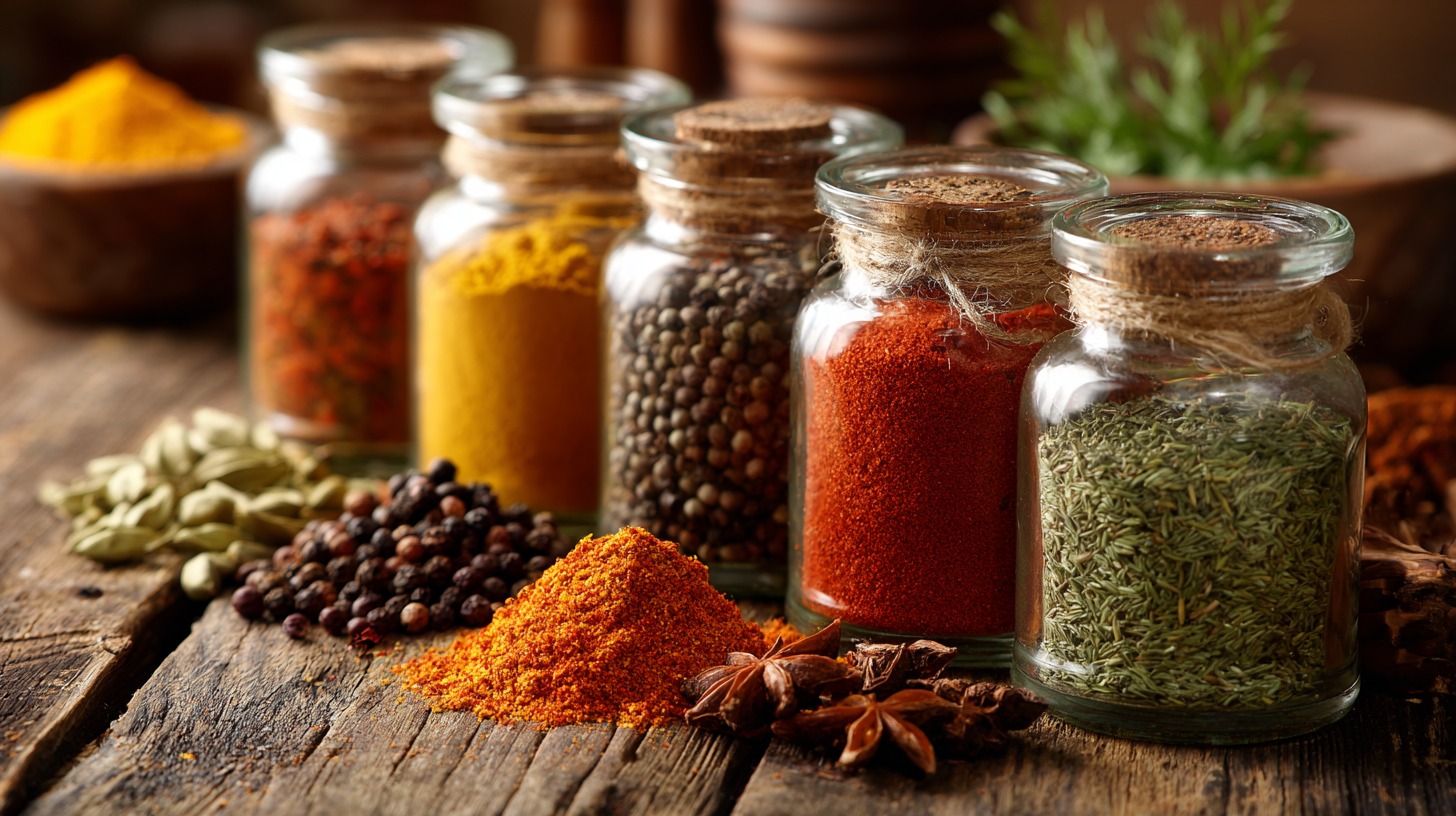In today's interconnected global marketplace, selecting the right food additives is crucial for manufacturers looking to meet diverse consumer demands and regulatory standards. As China continues to establish itself as a leading hub for food production, the variety and quality of food additives available for global sourcing have expanded significantly. This blog will explore the essential factors to consider when choosing food additives that not only comply with international regulations but also enhance product quality and safety. With insights into the latest industry trends and sourcing strategies, we aim to equip manufacturers with the knowledge they need to effectively navigate the complexities of food additives, ensuring their products stand out in a competitive landscape while maintaining the highest standards of excellence.

 When embarking on global sourcing for food additives,
the first step is to accurately identify your specific requirements. Each region may have different regulatory standards,
consumer preferences, and ingredient availability, which necessitates a tailored approach.
Begin by assessing your product formulations and understanding which additives—be they preservatives, flavor enhancers, or colorants—
align with your goals. This ensures compliance with local regulations while meeting the expectations of your target market.
When embarking on global sourcing for food additives,
the first step is to accurately identify your specific requirements. Each region may have different regulatory standards,
consumer preferences, and ingredient availability, which necessitates a tailored approach.
Begin by assessing your product formulations and understanding which additives—be they preservatives, flavor enhancers, or colorants—
align with your goals. This ensures compliance with local regulations while meeting the expectations of your target market.
Furthermore, consider the quality and sourcing of these additives. Develop relationships with suppliers who can provide
transparency regarding their sourcing practices, quality assurance measures, and certifications. This not only helps in maintaining
product integrity but also builds trust with your customers. Keep in mind that the sustainability of your sourced additives is increasingly important to consumers;
therefore, selecting reliable suppliers who prioritize both quality and environmental responsibility is essential in today’s market.
 When selecting food additives for global sourcing, evaluating regulatory compliance and safety standards in target markets is crucial. Different regions have distinct requirements concerning food safety, impacting how products can be marketed and used. For instance, the FDA plays a vital role in safeguarding consumers from harmful chemicals in food, ensuring that all additives meet stringent safety criteria. Companies must stay up to date with these regulations to avoid placing products that could pose health risks on the market.
When selecting food additives for global sourcing, evaluating regulatory compliance and safety standards in target markets is crucial. Different regions have distinct requirements concerning food safety, impacting how products can be marketed and used. For instance, the FDA plays a vital role in safeguarding consumers from harmful chemicals in food, ensuring that all additives meet stringent safety criteria. Companies must stay up to date with these regulations to avoid placing products that could pose health risks on the market.
Additionally, the recent developments in regulatory frameworks, like the updated Machinery (Safety) Regulations and the UK’s Online Safety Act, reflect an increasing emphasis on compliance across various industries. This trend underscores the necessity for businesses in the food sector to conduct thorough assessments of their supply chains, verifying that all food additives adhere to both local and international safety standards. Implementing a proactive approach to regulatory changes not only enhances consumer trust but also ensures that food products are safe and compliant, ultimately contributing to long-term business success.
In today’s ever-evolving food industry, selecting the right food additives is crucial for ensuring product safety and quality. When sourcing globally, it’s essential to analyze supplier credentials and quality assurance processes meticulously. According to recent studies, 70% of supply chain professionals cite supplier reliability as a top concern, emphasizing the need for rigorous assessments. Assessing factors such as certifications, quality control measures, and past compliance records provides insight into a supplier's ability to maintain high standards.
Furthermore, leveraging technology is transforming how we evaluate these suppliers. Advanced data analytics and AI-driven tools enable real-time monitoring of supplier performance, leading to significant improvements in supply chain transparency. For instance, a report indicates that companies utilizing such technologies report up to a 25% reduction in supply chain disruptions. As the global market continues to demand higher food safety standards, reevaluating supplier relationships through a data-driven lens will be indispensable in building a stable and trusted supply chain.
The global market for natural tocopherols is expected to experience remarkable growth, projected to rise from $761.55 million in 2025 to $1,974.60 million by 2032, with a compound annual growth rate of 14.58%. This trend signals a significant transformation in the food additives industry, driven by increasing consumer demand for healthier and more transparent ingredients. Shoppers are becoming more discerning, as highlighted by consumers like Ms. Tan from Beijing, who emphasize the importance of scrutinizing ingredient labels before making purchases.
As the market evolves, innovative food additives are increasingly being recognized for their functional, natural, and sustainable properties. The ongoing shift towards health-conscious products reflects a broader societal trend where consumers prioritize transparency and authenticity over mere labels. Brands that embrace this "ingredient revolution" will likely capitalize on emerging opportunities in a market that is yearning for trust and innovation. The emphasis on functional additives such as emulsifiers and thickeners is expected to rise, shaping the future landscape of food and beverage options.
| Additive Type | Functionality | Current Market Trends | Innovations | Regulatory Status |
|---|---|---|---|---|
| Preservatives | Extend shelf life | Growing demand for natural preservatives | Development of plant-based preservatives | Regulations tightening on synthetic preservatives |
| Coloring Agents | Enhance visual appeal | Preference for natural colors | Emergence of new natural pigments | Regulations are shifting towards sustainability |
| Emulsifiers | Stabilize mixtures | Increase in plant-based food formulations | Advancements in clean label emulsifiers | Regulatory bodies focusing on consumer safety |
| Flavor Enhancers | Improve taste | Rise in demand for clean label flavors | Innovations in fermented flavor profiles | Increased monitoring of synthetic flavors |
| Thickeners | Increase viscosity | Growth of gluten-free products | New alternatives from plant sources | Regulatory clarity on source materials |
When selecting food additives for global sourcing needs, creating a comparative checklist is crucial. According to a recent report from Mordor Intelligence, the global food additives market is projected to reach USD 66.24 billion by 2025, growing at a CAGR of 5.8% during the forecast period. This growth underscores the importance of evaluating the safety, efficacy, and regulatory compliance of different additives.
To construct an effective checklist, start by categorizing additives into key groups: preservatives, colorants, flavor enhancers, and emulsifiers. Each category should include considerations for natural vs. synthetic sources, potential allergens, and functionality. The Food and Agriculture Organization (FAO) indicates that approximately 20% of foodborne illnesses can be traced back to improper use of additives, making safety assessment a non-negotiable criterion. Additionally, monitoring regional regulations and consumer preferences can help tailor your choices, especially as the demand for clean-label products intensifies, influenced by a 2021 study by Innova Market Insights indicating that 47% of consumers are looking for transparency in food ingredient sourcing.
Ultimately, a well-structured checklist not only streamlines the selection process but also enhances the quality and safety of food products in diverse markets.
2025 Bio-Botanica, a division of Bio Answer Holdings Inc. All Rights Reserved.